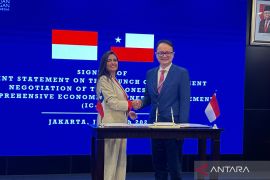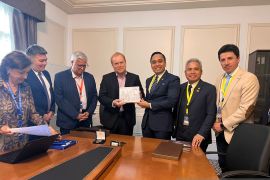Riot police used water cannons and fired tear gas to disperse the tens of thousands of demonstrators, who fought back by hurling rocks, sticks, and plastic bottles filled with paint.
Santiago Police Chief Sergio Gajardo told reporters that 32 officers were wounded "as a result of the extremely violent actions that took place at the end of the march."
A police spokesperson separately told AFP that 54 protesters had been arrested.
One of the officers, who was guarding the nearby Brazilian embassy, was seriously burned when an "incendiary artifact" burst on his shield and burning liquid spilled onto his legs, Gajardo said.
Officials said that some 30,000 people joined the march down La Alameda, a main downtown thoroughfare, though organizers said the number was closer to 80,000, the same number that marched in similar demonstrations on June 14 and June 30.
The protesters -- students, teachers, parents and children -- swarmed several blocks of the avenue in a noisy, festive and colorful protest.
The clash began when police moved in to stop the crowd from turning towards the Palacio de la Moneda, the presidential palace, where unlike the previous times organizers did not have a permit to demonstrate.
"They are playing with fire. That march was not authorized," Deputy Interior Minister Rodrigo Ubilla told reporters.
"The students must understand that the street is not theirs," added Ena von Baer, a spokeswoman for President Sebastian Pinera.
Students want the national government to take over the public school system, where 90 percent of the country`s 3.5 million students are educated.
The nationwide school system was broken up during the 1973-1990 military regime and handed over to municipal authorities. Protesters say the current system results in deep inequalities and is underfunded.
Protests have been mounting since Pinera, the first center-right president to govern Chile since the country returned to democracy in 1990, earlier in the year announced wide-ranging education spending cuts.
Pinera has said the cuts are needed to trim the government`s bloated bureaucracy, even as the country`s economy is experiencing a six percent annual growth rate.
The government currently dedicates 4.4 percent of the country`s gross national product to education, far below the seven percent recommended by UNESCO.
The demonstration comes 10 days after Pinera proposed a "grand accord" that includes a $4 billion fund, but no systemic reform.
In the June 30 protest, 13 people were detained and one police officer wounded. (*)
Editor: Kunto Wibisono
Copyright © ANTARA 2011











